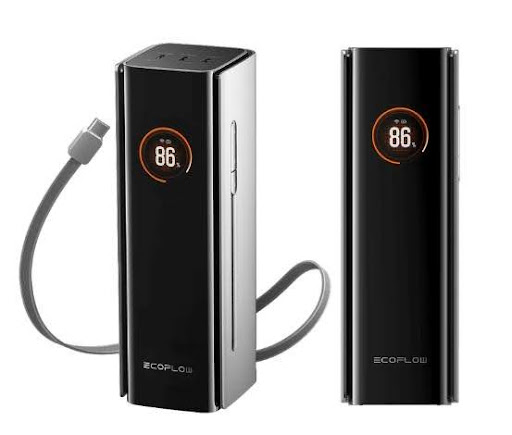Smartphones and other portable devices have become essential in our daily lives, but their batteries often fall short when we need them the most. A reliable power bank ensures you stay connected, whether you’re commuting, traveling, or simply away from an outlet for hours. However, not all power banks are built the same—some degrade quickly, while others withstand years of use. Durability isn’t just about physical toughness; it also involves battery longevity, safety features, and efficient power delivery. In this article, we’ll explore the key factors that make a power bank durable and how to pick one that fits your lifestyle.

Essential Durability Factors to Consider
Battery Type: Lithium-Polymer vs. Lithium-Ion
When choosing a power bank, the battery chemistry plays a crucial role in its lifespan and safety. Lithium-ion (Li-ion) batteries are common and cost-effective, offering decent energy density, but they tend to degrade faster after repeated charging cycles. On the other hand, lithium-polymer (LiPo) batteries are more stable, lighter, and less prone to swelling, making them a better choice for long-term use. LiPo batteries also handle extreme temperatures better, reducing the risk of overheating during fast charging. While they may cost slightly more, their durability justifies the investment if you need a power bank that lasts for years. Another advantage is their flexible form factor, allowing sleeker and more compact designs without compromising capacity. If you prioritize longevity and safety, a high-quality LiPo-based power bank is worth considering.
Capacity vs. Size: Finding the Right Balance
Power bank capacity, measured in milliampere-hours (mAh), determines how many charges it can provide. However, higher capacity often means a bulkier device, which may not be practical for daily carry. For most people, a 10,000mAh power bank strikes a good balance—it can recharge a smartphone 2-3 times and still fits comfortably in a bag or pocket. If you need extended power for travel or outdoor activities, a 20,000mAh model might be necessary, but keep in mind the added weight. Some manufacturers optimize space with advanced battery cells, offering higher capacity without excessive bulk. Always check real-world reviews, as some power banks lose efficiency over time, delivering less capacity than advertised. The key is to match the capacity with your usage habits—don’t sacrifice portability for unnecessary power.
Ruggedness: Water/Dust Resistance & Shockproof Ratings
Accidents happen, and a durable power bank should withstand everyday mishaps. Look for models with an IP (Ingress Protection) rating—IP67, for example, means the device is dust-tight and can survive brief immersion in water. This is especially useful for outdoor enthusiasts or those who frequently use their power bank in unpredictable environments. Shockproof designs with reinforced corners or rubberized casings add extra protection against drops. While rugged power banks may be slightly heavier, their durability ensures they won’t fail after a single fall. If your daily routine involves construction sites, hiking, or frequent travel, investing in a rugged power bank will save you from frequent replacements.
Key Features for Long-Term Reliability
High-Quality Chipsets & Safety Protections
A power bank’s internal components determine its efficiency and safety. Premium models use advanced chipsets to regulate voltage, preventing overcharging, short circuits, and overheating. Features like temperature control, overcurrent protection, and automatic shutoff safeguard both the power bank and your devices. Cheaper alternatives often cut corners on these protections, leading to faster battery degradation or even potential hazards. Reading technical specifications and user reviews can help identify models with reliable safety mechanisms. A well-built power bank not only lasts longer but also ensures your gadgets remain safe during charging.
Efficient Heat Dissipation Design
Excessive heat is a major enemy of battery longevity. High-quality power banks incorporate heat-dissipating materials, such as aluminum casings or ventilation grooves, to keep temperatures in check during fast charging. Some models even include built-in cooling systems to prevent thermal throttling, which slows down charging speeds when the device overheats. If you frequently use high-wattage charging (like USB-C Power Delivery), proper heat management becomes even more critical. A power bank that stays cool under heavy use will maintain its performance over time, whereas overheating can shorten its lifespan significantly.
Cable Integration vs. Port Durability
Some power banks come with built-in cables for convenience, but these can wear out faster than removable ones. If you prefer integrated cables, ensure they are made of durable materials like braided nylon. Alternatively, models with reinforced USB ports allow you to use your own high-quality cables, which can be replaced if damaged. Repeated plugging and unplugging can loosen ports over time, so check for sturdy construction. Magnetic charging options are also emerging as a more durable alternative, reducing wear on physical connectors. Consider your charging habits—if you frequently switch cables, a power bank with robust ports may be the better long-term choice.
Warranty Considerations
A solid warranty reflects the manufacturer’s confidence in their product. Look for at least a 12-month warranty, though premium brands often offer 18-24 months of coverage. Some companies even replace the unit if the battery capacity drops below a certain percentage within the warranty period. Reading warranty terms is essential—some exclude accidental damage or only cover defects under strict conditions. A longer warranty period not only provides peace of mind but also indicates a more reliable product.
Conclusion
Choosing a durable power bank involves balancing battery technology, capacity, ruggedness, and safety features. A well-built model may cost more upfront but saves money in the long run by avoiding frequent replacements. Among trusted brands, EcoFlow’s power banks stand out for their high-quality construction, reliable performance, and extensive warranty support. With multiple models catering to different needs, they offer a dependable solution for keeping your devices powered wherever you go. Investing in a durable power bank ensures you’re never left powerless when it matters most.

